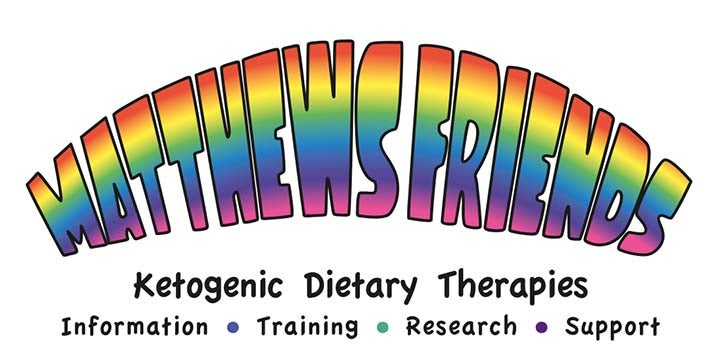I have been working as a Dietitian since 2012 and gained experience in adult and paediatrics, working both acutely and in the community. Deciding I wanted to work exclusively in paediatrics, I moved to an acute paediatric role in 2016, and initially covered cardiology and surgery, I have worked in the Ketogenic team since September 2017.
Our Ketogenic team currently includes 1 full and 2 part time Dietitians that equal 2 whole time equivalents), 1 part-time Dietetic assistant, 2 neurology consultants and 1 epilepsy specialist nurse who covers the neurology service as well as the Ketogenic Service.
"We currently have a capacity for 75 patients and will soon be expanding our service also to include an extra full time Dietitian increasing capacity to 100 patients, which will be the largest Ketogenic centre in the UK."
We currently have a capacity for 75 patients and will soon be expanding our service also to include an extra full time Dietitian increasing capacity to 100 patients, which will be the largest Ketogenic centre in the UK. While I had some training in Ketogenic diets, a lot of my initial learning was on the job (with assistance from my very supportive team!). After a few months into my role, I was interested in attending “KetoCollege” to gain more in-depth knowledge of the Ketogenic diet therapies. My colleague had attended the year prior and found it very useful.
Matthew’s Friend’s Keto College
I attended Matthew’s Friends KetoCollege in June 2018. This was a 3-day course aimed at increasing knowledge on Ketogenic diet therapies; provide scientific background and also practical knowledge for Ketogenic diet therapies. Matthew’s Friends is a registered charity that works with healthcare professional and families, supporting those who follow/advise on a ketogenic diet for the medical treatment of epilepsy.
The first day was aimed at all health care professionals (HCPs) with an interest in the diet therapy, and covers the history of the diet, when it would be suitable and what diet to consider. The 2nd and 3rd days are specifically aimed at Dietitians and support teams. Day 2 contained practical workshops on most of the diet therapies (Classical, MCT and Modified Atkins Diet). Day 3 went into more detail on the diet such as fine-tuning and enteral tube feeds.

My Ketogenic learnings
I found the course really useful. The balance between the theory and the practical elements allowed me to update my knowledge on the current evidence base and provided more insight into in areas I wasn’t as experienced in, such the Classical and MCT ketogenic diet. Our centre uses a version of the Modified Ketogenic diet for orally fed children, which involves counting the carbohydrates only. The initial carbohydrate amount starts at 30g, spread evenly throughout the day. This is then reduced gradually until adequate ketosis is achieved.
"Meeting other HCP’s working in Ketogenic diets was also very useful, which meant we were able to share our own ways of working and development ideas."
Networking
Meeting other HCP’s working in Ketogenic diets was also very useful, which meant we were able to share our own ways of working and development ideas. Following this, I am devising a more detailed ‘weaning onto solids booklet’ for families, who require more detail for patients that are establishing weaning foods.
Tasting Ketogenic Foods
Another highlight was the food! There were so many options to sample from all the specialist companies. The foods made from Vitaflo products such as betaquik®, keyo® and MCTprocal® gave me some new meal ideas for my patients. It was really useful to see food which is typically seen as ‘off limit’ on the Ketogenic diet, such as breadsticks, as they add in good crunchy texture to meals and snacks which can be difficult to get easily on the diet.

The ketogenic diet chefs led a cookery demonstration to show practically how the food is prepared and cooked. It was really interesting to see how the Danish pastries were made, using Mozzarella cooked in the microwave. There was a Ketogenic lunch one day. On the menu were various meats, egg and tuna mayonnaise, salads with nuts and cheese and puddings. Despite the portions looking smaller than a usual meal; they were filling, and I was not hungry after lunch. What I learnt was that it can take a while to adapt to the look and size of the meals on this diet.
"Following Ketocollege, I have fed back to my team and we are looking at reviewing our service and using some of the updated guidance to improve our practice."
What next after Keto College?
Following Ketocollege, I have fed back to my team and we are looking at reviewing our service and using some of the updated guidance to improve our practice. I think it would be good to attend whilst you are new to the area, but from speaking to others who have many years’ experience in Ketogenic diet, they have also found it really useful, and were able to look at new development areas from the course. I would definitely recommend the course to others who are working within Ketogenic diet therapies.
Betaquik®, keyo® and MCTprocal® are foods for special medical purposes and must be used under medical supervision.



